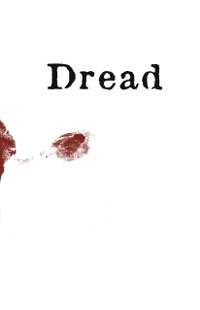 Dread is a storytelling game of horror based around a core mechanic in which the players pull blocks from a Jenga tower whenever their characters attempt a meaningful action: If the tower doesn’t collapse, the action is successful. If it does, the character is eliminated from the story, the tower is rebuilt, and play continues.
Dread is a storytelling game of horror based around a core mechanic in which the players pull blocks from a Jenga tower whenever their characters attempt a meaningful action: If the tower doesn’t collapse, the action is successful. If it does, the character is eliminated from the story, the tower is rebuilt, and play continues.
The intent is that the tower’s steady descent into precariousness models the traditional horror pacing of “tension rises, something bloody happens, and then tension starts rising again”. And, in my experience, this fundamentally works: In a focused gaming environment, the physical act of pulling the block viscerally and collectively immerses the players into the emotional state of the narrative.
So, at a basic level, the mechanic is very, very effective.
Which makes it all the more unfortunate that the game inherently suffers from a systematic pacing failure that arises from the same mechanic.
Let’s assume that you want a collapse or near-collapse state at the end of the game (for a tension-filled conclusion).
Per the designers of the game in this thread, it takes about 30 pulls to reach a collapse-state on the tower. I haven’t done any rigorous testing, but that sounds pretty plausible based on my experience. Unfortunately, this means that Dread only reduces the time between collapse-states by 10% (by pulling 3 additional blocks per character knocked out when you rebuild the tower). That means that in a two-collapse game one of the players will be sitting out of the action for nearly half the game. In a three-collapse game, one of the players will be sitting out for 60% of the game.
(To put that in perspective, it means that in a two hour game featuring three collapses, one of the players will play for 45 minutes and then watch the other players for an hour and a quarter. Even doubling the rate of pulls after the first collapse only mitigates this problem.)
Obviously this isn’t a problem if you’ve got a pool of players who don’t mind being completely passive spectators for long periods of time, but the “no chatter” rule in Dread (prohibiting players from talking out of character) only exacerbates a problem which is widely recognized as being a bad idea in game design for a reason.
THE END GAME PROBLEM
The logical conclusion would seem to be pacing for games featuring a single collapse-state: People aren’t “supposed” to be eliminated except for possibly a single elimination during the final climactic struggle. This makes the game considerably narrower in its utility, but appears to be the only way to easily resolve the “bored player” syndrome.
Unfortunately, this solution only calls attention to the other problem the game has: Tension deflation following a tower collapse.
Theoretically, of course, this models the tension/release cycle of horror movie pacing (as described above). But the player elimination problem forces us to abandon that pacing. And even if we didn’t do that, the same problem exists at the end of the game: There’s no way to quickly ratchet the tension back up.
Bill is killed by the werewolf… and then the werewolf isn’t scary any more and the group mops him up.
For mid-game collapses, of course, the GM should make the werewolf run off and then come back later (once the tension has built again). That, after all, is how horror movies work.
But the problem is repetitive: Whenever the tension ratchets up to the point that you can trigger an effective conclusion, there’s a high-risk for a collapse. And since a collapse always indicates a failure, it means that the actual conclusion will happen AFTER the collapse. This means that the game tends to either (a) end on a whimper or (b) a sacrifice (in which one of the players sacrifices their character by knocking over the tower to achieve a Pyrrhic victory). The latter is effective… but only up to the point where it becomes predictable.
SOLUTIONS?
Unfortunately, I don’t have any.
And it is unfortunate, because, as I mentioned above, the core mechanic is very effective in practice: The Jenga tower not only mechanically creates tension which normally requires a great deal of GM skill to evoke, but also invests the table collectively in that tension as a shared experience.
The game is intensely good at a micro-level. But its inherent pacing problems create a consistently frustrating experience at the macro-level.











